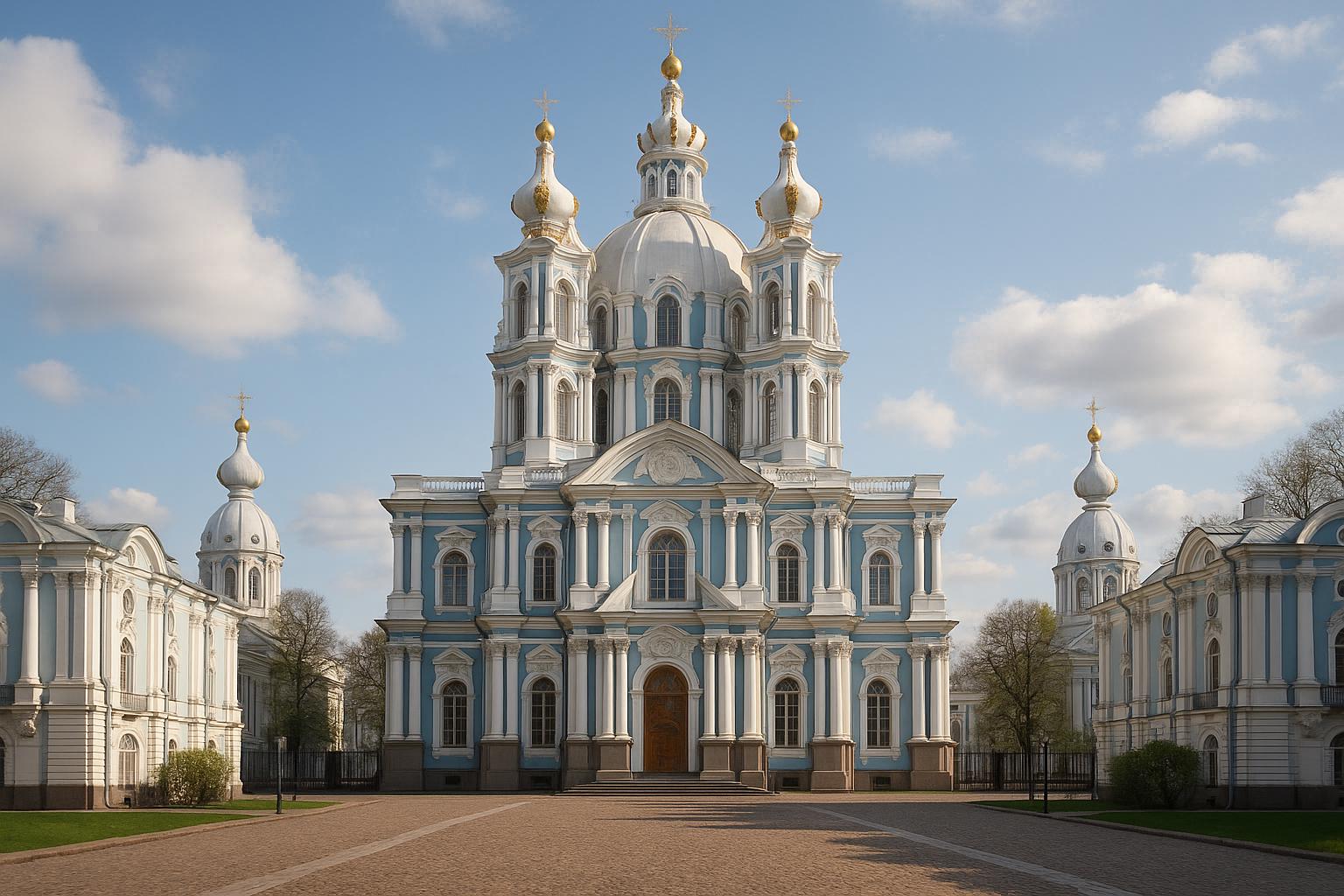Overview of Smolny Cathedral
The Smolny Cathedral is an iconic emblem of St. Petersburg, Russia, representing a significant chapter in the city’s extensive repertoire of architectural marvels. This cathedral, designed by Bartolomeo Rastrelli, showcases the unique characteristics of the Baroque style, a style for which Rastrelli is renowned and which he employed in some of his most famous works, such as the Winter Palace. This monumental structure isn’t solely an architectural delight but is also steeped in historical importance and educational undertones, reflecting the intricacies of the period in which it was constructed.
Historical Context
Understanding the historical background of the Smolny Cathedral reveals its multifaceted significance. The construction commenced in 1748, during the leadership of Empress Elizabeth of Russia. Empress Elizabeth envisioned the cathedral as a central piece of a convent designed for young noblewomen. This vision highlights the dual objectives served by the cathedral: spiritual devotion and the education of noblewomen. However, the construction didn’t progress without challenges. Various interruptions and financial difficulties plagued the project, delaying its completion significantly. It wasn’t until 1835, under the reign of Nicholas I, that the cathedral was finally consecrated, marking almost a century since its inception.
Architectural Features
The Smolny Cathedral is undoubtedly a cornerstone of Baroque architecture. The intricate ornamental designs and grandiosity of its structure are par excellence in the architectural landscape of St. Petersburg. The distinctive blue and white facade is not just visually appealing but also largely symbolic, embodying the essence of Baroque architectural elegance. The cathedral is adorned with numerous cupolas, crowned by gold-plated crosses which add a divine aura to the edifice. The layout, with its central dome accompanied by four smaller domes, introduces a flawless symmetry, enhancing the overall visual impact of the cathedral’s design.
Interior Design
The interior design of the Smolny Cathedral aligns with classical aesthetics, diverging slightly from its opulent exterior. The interior, an undertaking completed only after significant construction delays, preserves a restrained elegance characterized by Classical style influences. Despite its simplicity relative to the exterior, the cathedral’s interior is not lacking in grandeur. The design includes enormous columns and a vast, open central area, engineered not just for aesthetic considerations, but also to provide superior acoustics. This interior spatial design facilitates the auditory experience, a feature utilized in the contemporary use of the cathedral.
Current Status
Today, the Smolny Cathedral stands not only as a preserved historical site but also as a vibrant cultural venue. Since its conversion into a concert hall in 1980, it has remained a popular location for musical performances, largely due to its exceptional acoustics, which draw musicians and audiences alike. This modern role marries the cathedral’s historic essence with contemporary cultural dynamics, maintaining its relevance in St. Petersburg’s rich cultural scene.
For individuals keen on deep diving into the Smolny Cathedral’s historical and architectural narrative, there are a multitude of resources and guided tours available. These tours, accessible through various cultural sites and information centers in St. Petersburg, offer insight into the cathedral’s unique contributions to both architecture and Russian history.
St. Petersburg is also home to a multitude of historic structures and landmarks, each narrating its segment of history and contributing collectively to the rich tapestry of Russian cultural heritage. Through these preserved sites, visitors glean an understanding of the architectural evolution that characterizes this illustrious city.

